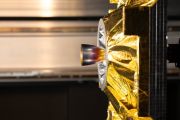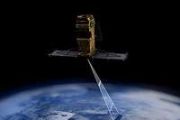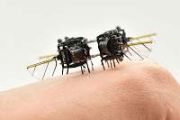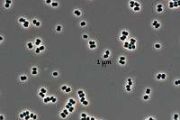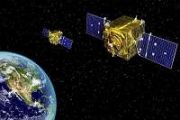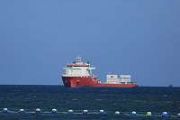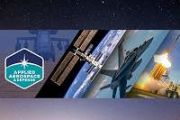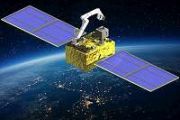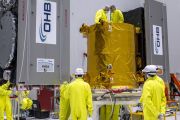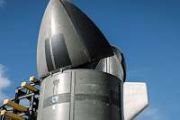
Copernical Team
Bill Nelson, Mark Kelly praise how ASU involves students in missions
 Both men have been blasted into space and have served in the U.S. Senate. But NASA Administrator Bill Nelson and U.S. Sen. Mark Kelly were "back in school" during a visit to Arizona State University's School of Earth and Space Exploration on Friday, May 27.
The pair got to see details of the university's more than 20 space missions - ASU is leading the NASA space missions Psyche and LunaH-
Both men have been blasted into space and have served in the U.S. Senate. But NASA Administrator Bill Nelson and U.S. Sen. Mark Kelly were "back in school" during a visit to Arizona State University's School of Earth and Space Exploration on Friday, May 27.
The pair got to see details of the university's more than 20 space missions - ASU is leading the NASA space missions Psyche and LunaH- Ursa Major announces new engine to replace unavailable Russian-made engines
 Ursa Major, America's only privately funded company that focuses solely on rocket propulsion, has introduced the latest in its line of engines. Arroway is a 200,000-pound thrust liquid oxygen and methane staged combustion engine that will serve markets including current U.S. national security missions, commercial satellite launches, orbital space stations, and future missions not yet conceived.
Ursa Major, America's only privately funded company that focuses solely on rocket propulsion, has introduced the latest in its line of engines. Arroway is a 200,000-pound thrust liquid oxygen and methane staged combustion engine that will serve markets including current U.S. national security missions, commercial satellite launches, orbital space stations, and future missions not yet conceived. Looking ahead to Webb telescope's first images

The NASA/ESA/CSA James Webb Space Telescope will release its first full-color images and spectroscopic data on 12 July 2022.
As the largest and most complex observatory ever launched into space, Webb has been going through a six-month period of preparation before it can begin science work, calibrating its instruments to its space environment and aligning its mirrors. This careful process, not to mention years of new technology development and mission planning, has built up to the first images and data: a demonstration of Webb at its full power, ready to begin its science mission and unfold the infrared Universe.
"This first release will be a remarkable moment for the mission, giving us a first glimpse of how Webb will transform our view of the Universe," said Chris Evans, ESA Webb Project Scientist. "We are looking forward to sharing the experience of seeing these first images and spectra with the public across Europe."
Behind the scenes: Creating Webb's first images
"As we near the end of preparing the observatory for science, we are on the precipice of an incredibly exciting period of discovery about our Universe.
Did NASA find Hell? Scientists brace for first glimpse of world that constantly burns

Mankind's first look at conditions on a "super-Earth" 50 light years away is expected in coming weeks via the James Webb Space Telescope, and NASA is bracing to see the stuff of nightmares.
The planet, called 55 Cancri e, orbits so close to "its Sun-like star" that surface conditions could literally be like the Hell of biblical description: a dimension in a constant state of burning.
Data show 55 Cancri e is less than 1.5 million miles from its star—1/25 the distance super hot Mercury is from our sun, NASA says.
"With surface temperatures far above the melting point of typical rock-forming minerals, the day side of the planet is thought to be covered in oceans of lava," NASA reported last week.
"Imagine if Earth were much, much closer to the Sun. So close that an entire year lasts only a few hours. So close that gravity has locked one hemisphere in permanent searing daylight and the other in endless darkness. So close that the oceans boil away, rocks begin to melt, and the clouds rain lava."
Nothing like it exists in our solar system, NASA says.
NASA awards two contracts for next generation spacesuits

NASA on Wednesday announced it has awarded contracts to two companies to develop the next generation of spacesuits for missions to the International Space Station and the Moon.
The winners of the Extravehicular Activity Services (xEVAS) Contract were Axiom Space—which has organized commercial flights to the ISS and is working on its own private space station—and Collins Aerospace.
"History will be made with the suits when we get to the Moon. We will have our first person of color and our first woman that will be wearers and users of these suits in space," Vanessa Wyche, director of NASA Johnson Space Center in Houston told reporters.
The values of the contracts have not yet been announced but they have a combined ceiling of $3.5 billion through 2034.
NASA could end up picking both companies, just one, or add more companies later.
Experts at the US space agency laid out the technical standards they required of the suits, with the companies responsible for designing, certifying and producing the suits as well as support equipment for both the ISS and the Artemis missions to return to the Moon.
Looking ahead to Webb’s first images
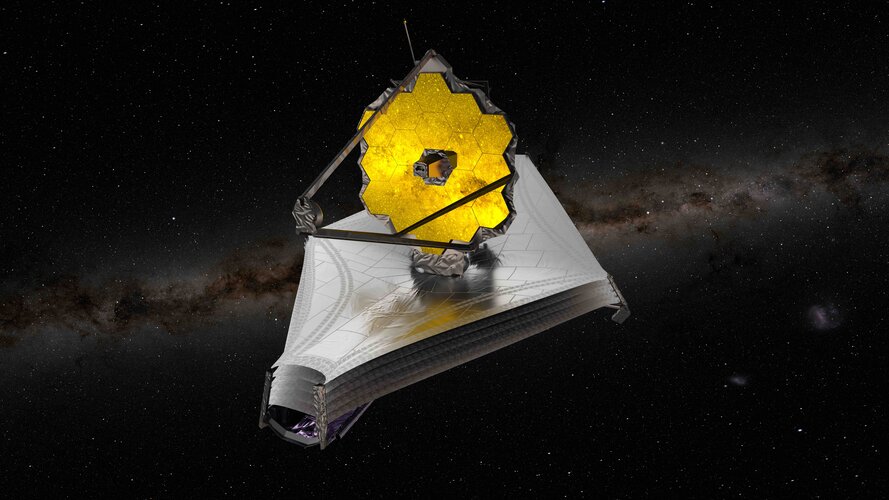
The NASA/ESA/CSA James Webb Space Telescope will release its first full-colour images and spectroscopic data on 12 July 2022.
NASA eyes November for launch of NOAA's JPSS-2

NASA and the National Oceanic and Atmospheric Administration (NOAA) are now targeting Nov. 1, 2022, as the new launch date for NOAA's Joint Polar Satellite System-2 (JPSS-2) satellite mission. During recent tests of a key instrument designed to collect visible and infrared images, the team found and corrected an issue, which resulted in additional time needed to complete thermal vacuum testing.
The Visible Infrared Imaging Radiometer Suite instrument, or VIIRS, experienced a test equipment issue during thermal vacuum testing. Engineers determined the issue was the result of the movement of test equipment caused by temperature fluctuations during the test. After modifying the test set up, the team retested the system, and it demonstrated excellent performance.
JPSS-2, the third satellite in the Joint Polar Satellite System series, is scheduled to lift off from the Vandenberg Space Force Base in California, on a United Launch Alliance (ULA) Atlas V rocket.
Euclid gains solar power and protection
 Video:
00:02:54
Video:
00:02:54
Spacecraft are not so different to humans – whilst the Sun can be a great source of vital energy, both people and machines must also be protected from its harmful effects.
In this video, engineers at Thales Alenia Space in Turin are attaching a combined sunshield and solar panel module to the main body of ESA’s Euclid spacecraft. This process took place on 23 May 2022 and lasted an entire day.
The module has two functions: whilst the solar panels will provide the spacecraft with power, the sunshield will shade the instrument-carrying payload module from
ESA conducts first tests of exoplanet hunter Plato in space-like conditions

Mitsubishi Electric develops innovative laser comms terminal
 Mitsubishi Electric has developed the prototype of what is believed to be the world's first* optical receiver for use in laser communication terminals (LCTs), that integrates space optical communication using laser beams and a function to detect the direction of received beams in the 1.5-um band, a general-purposeband used for terrestrial optical fiber communications and other applications.
Mitsubishi Electric has developed the prototype of what is believed to be the world's first* optical receiver for use in laser communication terminals (LCTs), that integrates space optical communication using laser beams and a function to detect the direction of received beams in the 1.5-um band, a general-purposeband used for terrestrial optical fiber communications and other applications. 


